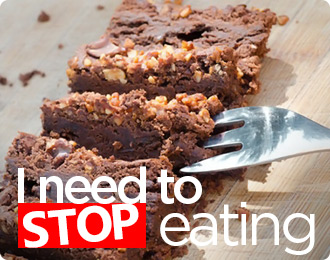The Skinny On Body Fat: 4 Surprising Facts

Fat: That bulge when you indulge. And yes, some of us have quite a bit of bulge to show for what we've indulged in.
The truth is, everyone has body fat but most people don’t think much about that extra bit of cushioning around their midsections, other than how it may be wrecking their skinny jean game. But many of you may be surprised to learn that there is more to fat than meets the eye.
Fat actually comes in different forms and has different effects on our body depending on where it’s located. Understanding how and why fat does what it does is the first step toward taking control of your own.
Ready to brush up on your fat facts? Keep reading!
1. We have two kinds of fat: white and brown
The type of fat most people know is white fat. It’s the one that makes our jeans tighter, our muffin-tops rise and that serves no function other than taking up space and storing excess calories.
Brown fat is a darker-colored, more metabolically active type of fat. That’s just a more science-y way of saying that unlike white fat, whose primary role is to store calories, brown fat promotes calorie burning which in turn promotes weight loss. It also regulates body temperature, so most of it disappears shortly after birth when it’s fulfilled the important role of keeping a baby’s body temperature stable.
In adults, brown fat cells aren't as abundant but new research suggests that diet and exercise can work as fat “alchemists,” activating certain hormones that convert white fat cells into brown ones. There is also evidence that certain foods such as brown seaweed, licorice root and hot peppers may have the ability to do this as well.
Scientists are also looking into creative ways to fight the war on obesity, such as attempting brown fat transplant surgeries and formulating drugs that could actively convert white fat cells to brown fat cells in humans.
2. Belly fat =very bad fat
Belly fat, also called visceralfat, is much more harmful to your health than the “junk in your trunk” (i.e. the fat located around your hips and butt).
Though it’s true that white fat tends to just sit around and serve as a calorie reserve, deep belly fat (the kind that makes for a classic beer belly) is actually a type of “working” fat that churns out hormones that make all kinds of bad things even worse, such as increasing LDL (bad cholesterol), blood pressure and inflammation. Belly fat also plays a key role in the development of insulin resistance, a precursor to diabetes.
On the bright side, this kind of makes that fat on your thighs seem a bit more charming, no?
3. You can’t “spot reduce” body fat
We often hear about exercises that target fat burning in a particular part of the body, but this type of wording can be deceptive when it comes to weight loss. Overall, weight loss is a simple concept: Burn more calories than you eat. Or even better, eat healthy and exercise, and you’ll lose weight (or more specifically, you’ll lose body fat).
That said, all the crunches in the world won't make belly fat vanish. Ultimately, your body will determine where and in what body part order (arms, legs, abdomen, etc.) it'll burn its fat store. Luckily, there are forms of exercise that can accelerate fat loss, such as high-intensity interval training (HIIT), but no one type can simply "spot reduce" body fat in specific areas.
4. Body fat is best measured in inches, not pounds
While it's fine to use the bathroom scale to track your weight, the truth is that they aren't meant to measure body fat. They simply report our total mass but tell us nothing about body composition, or what percentage of our body is actually fat compared to everything else.
This is all to say that while a bathroom scale will most certainly let you know if you've lost weight, that reduction in weight could be from losing actual body fat or it could be from losing water, muscle or a combination of things you might not want to be losing.
A much more accurate way of tracking body fat is to use a tape measure. Or even better, start tracking your fat loss with body fat calipers, a tool that measures body fat through the thickness of folds on of skin. They're a cheap, easy-to-use tool that can completely change the way you view fat and weight loss.
Did you learn anything new about body fat?
Photo Credit: Danny Markulis
-
Are You Supposed to be Fat?
Have you struggled with your weight for so long that you cant remem
-
Weight Loss For Those Who Hate Fitness Clubs
Does your weight loss program make you struggle shamefully around your
-
Weight Loss Tips To Help You Lose 10 Pounds By Easter
If losing weight is your goal, there are
-
Heres The Skinny On Fat Burning Supplements
Millions of men and women worldwide stru
-
Industry-funded study implies diet soda is superior to water for weight loss
The results of a new study published in the journal Obesity imply
-
What You Need to Understand About Weight Loss Misconceptions
There are numerous misconceptions about
- DON'T MISS
- Limit your choices and lose more weight
- Get Fit For Your Skinny Jeans
- So You Wanna Be A Fitness Model? A Guide To Success! Part 2
- Top Five Worst Foods You Can Eat
- Memory loss in seniors may be better treated with increased brain activity
- 5 Ways To Make Protein Benefit You
- Effects Of Sleep On Fat Loss
- Healthy Foods That Are No So Healthy
- Weight Loss On Your New Years Agenda Prepare For The Top Weight Loss Scams Of 2006 PART 2
- To Lose Weight – Drink More Water!




